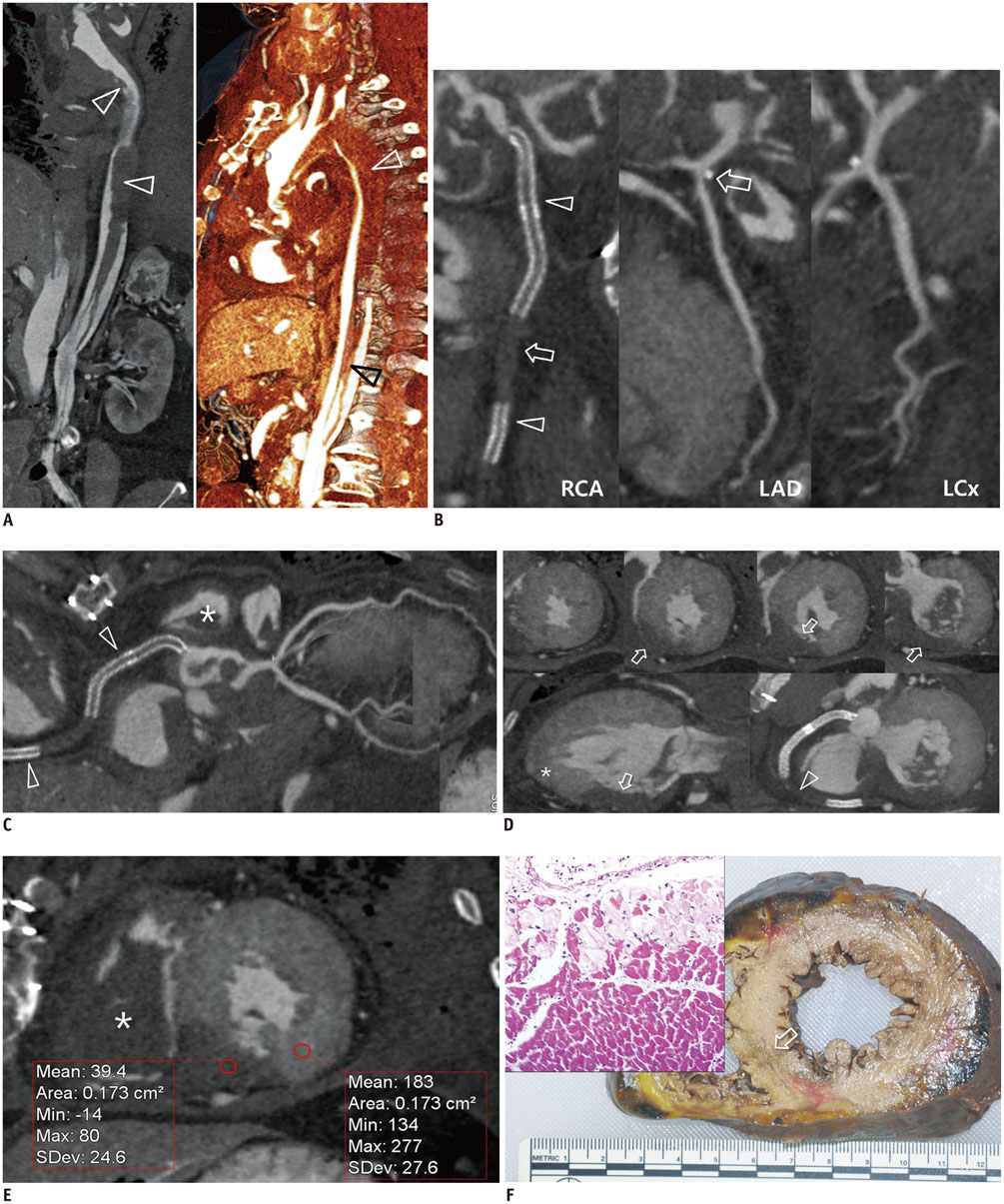Korean J Radiol.
2015 Oct;16(5):1024-1028. 10.3348/kjr.2015.16.5.1024.
Myocardial Contrast Defect Associated with Thrombotic Coronary Occlusion: Pre-Autopsy Diagnosis of a Cardiac Death with Post-Mortem CT Angiography
- Affiliations
-
- 1Department of Radiology, Soonchunhyang University Hospital, Bucheon 14584, Korea. acarad@naver.com
- 2Department of Forensic Medicine, National Forensic Service, Wonju 26460, Korea.
- KMID: 2160769
- DOI: http://doi.org/10.3348/kjr.2015.16.5.1024
Abstract
- We report the case of a female who died of suspected acute myocardial infarction. Post-mortem CT angiography (PMCTA) was performed with intravascular contrast infusion before the standard autopsy, and it successfully demonstrated the complete thrombotic occlusion of a coronary artery and also a corresponding perfusion defect on myocardium. We herein describe the PMCTA findings of a cardiac death with special emphasis on the potential benefits of this novel CT technique in forensic practice.
MeSH Terms
Figure
Reference
-
1. Bastarrika G, Lee YS, Huda W, Ruzsics B, Costello P, Schoepf UJ. CT of coronary artery disease. Radiology. 2009; 253:317–338.2. Leth PM. Computerized tomography used as a routine procedure at postmortem investigations. Am J Forensic Med Pathol. 2009; 30:219–222.3. Dirnhofer R, Jackowski C, Vock P, Potter K, Thali MJ. VIRTOPSY: minimally invasive, imaging-guided virtual autopsy. Radiographics. 2006; 26:1305–1333.4. Grabherr S, Djonov V, Yen K, Thali MJ, Dirnhofer R. Postmortem angiography: review of former and current methods. AJR Am J Roentgenol. 2007; 188:832–838.5. Grabherr S, Doenz F, Steger B, Dirnhofer R, Dominguez A, Sollberger B, et al. Multi-phase post-mortem CT angiography: development of a standardized protocol. Int J Legal Med. 2011; 125:791–802.6. Michaud K, Grabherr S, Doenz F, Mangin P. Evaluation of postmortem MDCT and MDCT-angiography for the investigation of sudden cardiac death related to atherosclerotic coronary artery disease. Int J Cardiovasc Imaging. 2012; 28:1807–1822.7. Roberts IS, Benamore RE, Peebles C, Roobottom C, Traill ZC. Technical report: diagnosis of coronary artery disease using minimally invasive autopsy: evaluation of a novel method of post-mortem coronary CT angiography. Clin Radiol. 2011; 66:645–650.8. Saunders SL, Morgan B, Raj V, Robinson CE, Rutty GN. Targeted post-mortem computed tomography cardiac angiography: proof of concept. Int J Legal Med. 2011; 125:609–616.9. Morgan B, Sakamoto N, Shiotami S, Grabherr S. Postmortem computed tomography (PMCT) scanning with angiography (PMCTA): a description of three distinct Methods. In : Rutty GN, editor. Essentials of autopsy practice. 1st ed. London: Springer-Verlag;2014. p. 1–21.10. Grabherr S, Hess A, Karolczak M, Thali MJ, Friess SD, Kalender WA, et al. Angiofil-mediated visualization of the vascular system by microcomputed tomography: a feasibility study. Microsc Res Tech. 2008; 71:551–556.
- Full Text Links
- Actions
-
Cited
- CITED
-
- Close
- Share
- Similar articles
-
- Pregnancy-Related Acute Myocardial Infarction: A Case Report
- Forensic Consideration of Myocardial Reperfusion Injury Associated with Cardiac Valves Replacement and Coronary Artery Bypass Graft: A Case Report
- Sudden Cardiac Death from Coronary Arteriosclerosis and Coronary Artery Aneurysm in Childhood: An Autopsy Case
- Evaluation of the Usefulness of Cardiac Marker Analysis for Postmortem Diagnosis of Acute Myocardial Infarction
- Postmortem Biochemistry (I) : Cardiac Markers


